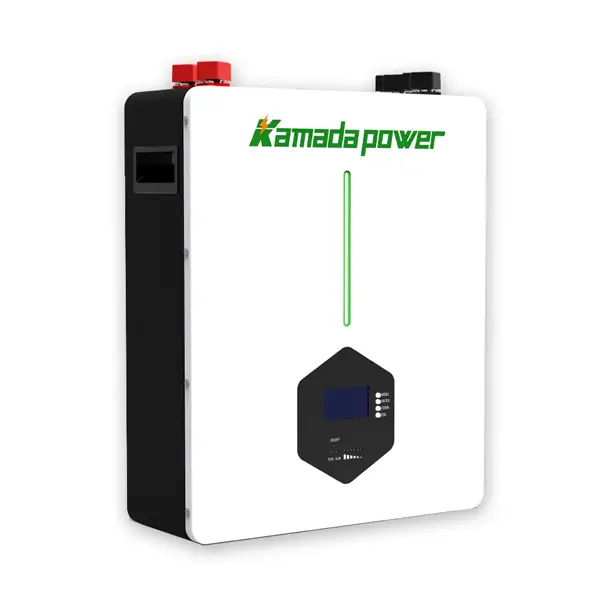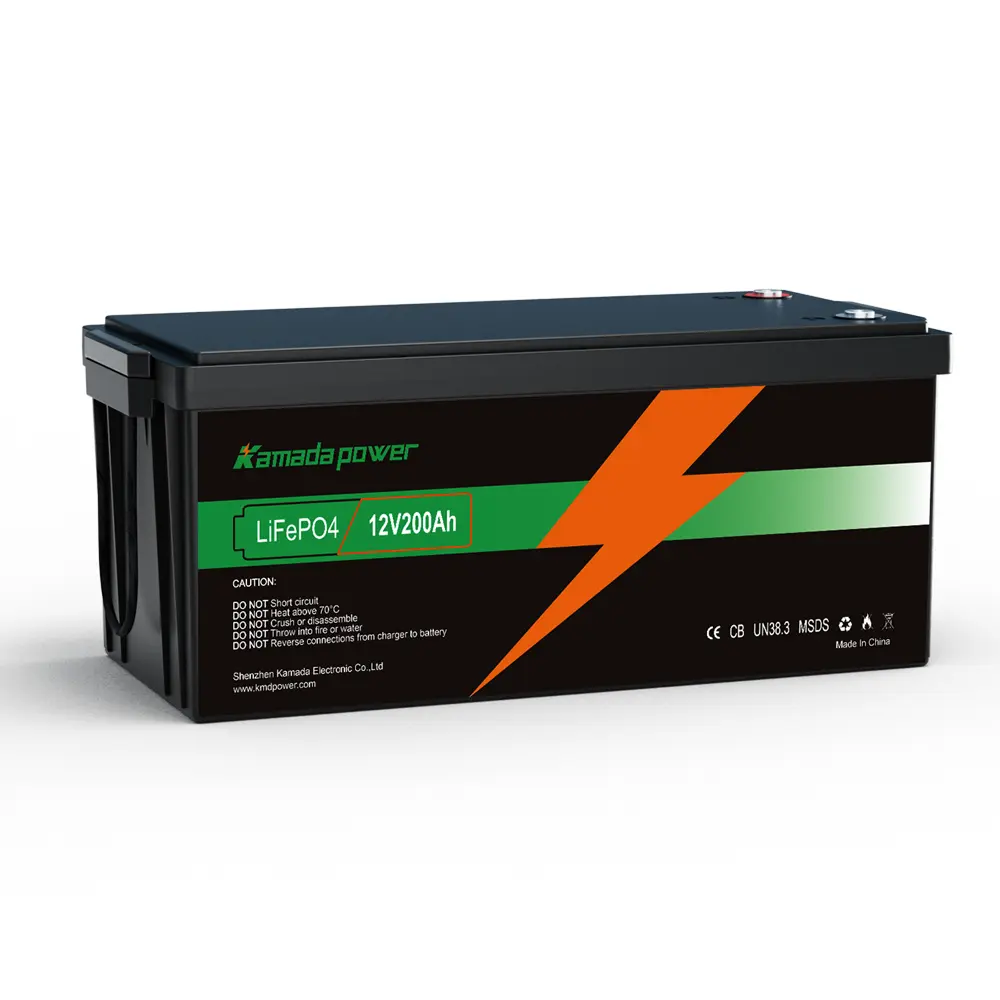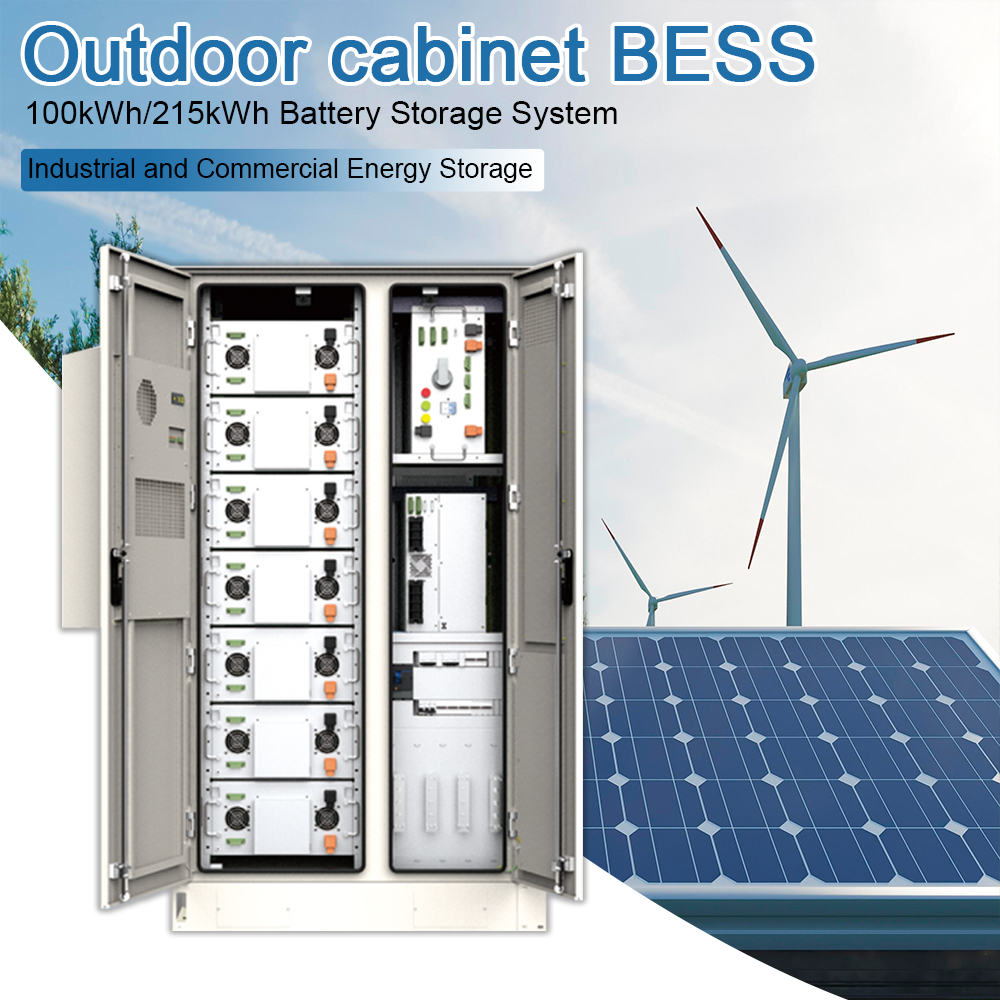Les pannes d'électricité sont plus qu'un désagrément ; elles constituent une menace directe pour votre entreprise. Elles peuvent interrompre une chaîne de production ou corrompre une transaction sur un serveur en quelques secondes. Et pour de nombreuses entreprises, les retombées financières de ce temps d'arrêt ne sont rien de moins que brutales.
C'est précisément cette réalité qui a rendu batterie de secours un élément fondamental de l'infrastructure moderne, et non un simple complément optionnel. Il s'agit d'un outil essentiel à la continuité des activités, qui protège activement vos données, votre équipement et vos résultats. Voyons comment ces systèmes fonctionnent et pourquoi ils sont devenus si essentiels.

kaamda power 10kwh powerwall home battery

kamada power 12v 200ah lifepo4 battery

Système de stockage d'énergie industriel et commercial avec batterie de 100kwh
Comprendre l'alimentation par batterie de secours
Définition de la batterie de secours
Pensez-y de la manière suivante : un système de batteries de secours est la réserve d'énergie privée de votre installation. Il a une mission et une seule : prendre le relais dès que le réseau s'éteint. La commutation est si rapide, elle se fait à la milliseconde, que vos systèmes critiques ne subissent jamais d'interruption. Aucun.
Fonctionnement des batteries de secours
Que se passe-t-il sous le capot ? Le processus est étonnamment simple. L'énergie est stockée dans les batteries sous forme de Courant continu (DC). En cas de panne, l'onduleur du système prend le relais en convertissant le courant continu en courant électrique conforme aux normes du réseau. Courant alternatif (CA) votre équipement doit fonctionner.
L'ensemble de ce processus est géré par le BMS (système de gestion de la batterie). Un bon système de gestion des bâtiments est la clé d'une longue durée de vie, parce qu'il gère les éléments suivants cycles de charge et de décharge pour protéger la santé de la batterie et obtenir tous les avantages possibles. durée du cycle de l'énergie. De nombreux systèmes modernes sont également conçus pour être reliés à des panneaux solaires, ce qui vous permet de stocker votre propre énergie et de fonctionner comme un micro-réseau autosuffisant.
Types de batteries de secours
Le type de chimie de la batterie que vous choisissez est une décision importante. Il détermine presque tout ce qui concerne les performances du système et ce qu'il vous coûtera au cours de sa durée de vie.
Batteries plomb-acide
Il s'agit de l'ancienne solution. Pendant des décennies, l'acide-plomb scellé (SLA) a été le choix par défaut, principalement parce qu'il était bon marché au départ. Mais ces économies initiales s'accompagnaient d'un sérieux bagage. Elles sont incroyablement lourdes, nécessitent une maintenance permanente et leur courte durée de vie signifie qu'elles coûtent presque toujours plus cher à long terme.
Piles au lithium-ion
C'est là que la majeure partie de l'industrie a atterri, en particulier sur le phosphate de fer lithié (LFP ou LiFePO4). La raison en est la performance, tout simplement. La chimie du LFP offre un mélange puissant de sécurité et une durée de vie exceptionnellement longue (souvent plus de 4 000 cycles), tout en ne nécessitant pratiquement aucune maintenance. Le prix initial est plus élevé, mais le coût total de possession est beaucoup plus bas.
L'ion-sodium et les technologies émergentes
Il s'agit là d'un sujet intéressant. Gardez un œil sur batteries sodium-ion. Cette chimie gagne beaucoup de terrain dans le domaine du stockage stationnaire car elle évite totalement les problèmes de chaîne d'approvisionnement liés au lithium et au cobalt. Son véritable atout, cependant, est son incroyable capacité d'absorption. performances en cas de températures extrêmes. Pour toute installation située dans un climat rigoureux et ne disposant pas d'une salle de stockage à température contrôlée, cette technologie est susceptible de changer la donne.
Tableau comparatif des types de piles
| Fonctionnalité | Plomb-acide (SLA) | Lithium-Ion (LFP) | Sodium-Ion (émergent) |
|---|
| Durée de vie typique | 300 - 1 000 cycles | 4 000 - 8 000+ cycles | 3 000 - 5 000+ cycles |
| Densité énergétique | Faible (30-50 Wh/kg) | Élevé (120-160 Wh/kg) | Modérée (100-140 Wh/kg) |
| Maintenance | Régulier (arrosage, égalisation) | Aucun | Aucun |
| Coût initial | Faible | Haut | Modéré à faible (projeté) |
| Meilleur pour | Applications à faible coût et à faible cycle | Haute performance, longue durée de vie, axée sur le TCO | Stockage stationnaire, températures extrêmes |
Pourquoi les batteries de secours sont-elles importantes ?
Assurer une alimentation continue pendant les pannes
Temps de fonctionnement. Un point c'est tout. Pour un processus de fabrication ou un centre de données, il n'existe pas de temps d'arrêt "acceptable". Un système de batteries permet de passer à une alimentation de secours de manière réellement invisible. Votre système équipements industriels et les serveurs n'auront jamais la moindre idée de la défaillance du réseau.
Protéger les appareils et les données critiques
Une coupure de courant soudaine ne fait pas qu'interrompre le travail : elle peut corrompre vos bases de données et détruire physiquement des appareils électroniques sensibles. Un onduleur de qualité nettoie également le courant, agissant comme un pare-feu qui protège votre infrastructure numérique des surtensions et des baisses de tension chaotiques d'un réseau défaillant.
Réduire les coûts énergétiques grâce à l'écrêtement des pointes
C'est là que les choses deviennent intéressantes d'un point de vue financier. Votre facture d'électricité comprend probablement des "frais de demande" élevés qui sont basés sur la période de consommation d'électricité la plus élevée. Une batterie peut être programmée pour se décharger pendant ces heures de pointe coûteuses, réduisant ainsi la demande du réseau et diminuant directement votre facture. Nous avons vu cette stratégie générer à elle seule un retour sur investissement complet pour nos clients en quelques années seulement.
Soutenir les objectifs de développement durable
Lorsque vous associez une batterie à l'énergie solaire, vous pouvez enfin utiliser toute l'énergie propre que vous produisez. Vous pouvez mettre en réserve l'énergie solaire que vous produisez pendant la journée et l'utiliser la nuit. C'est le moyen le plus direct de réduire votre empreinte carbone et de diminuer votre dépendance à l'égard d'un réseau qui devient de moins en moins prévisible.
Cas d'utilisation et scénarios courants
Ces systèmes sont utilisés partout, chaque configuration étant adaptée à une tâche spécifique.
- Maisons résidentielles : Pour faire fonctionner les appareils essentiels - réfrigérateur, internet, appareils médicaux critiques.
- Petites entreprises et bureaux : Protéger les serveurs, les systèmes de point de vente et les équipements de sécurité.
- Applications industrielles et commerciales : Nous sommes dans la cour des grands. Nous parlons de ESS commercial pour gérer les pics de charge d'une usine, la sauvegarde des lignes d'assemblage automatisées ou la fourniture d'une énergie propre pour les systèmes de contrôle à l'intérieur d'un gigantesque entrepôt.
- Applications extérieures et mobiles : Il s'agit par exemple d'alimenter des tours de télécommunication éloignées ou de fournir des services essentiels de télécommunication. alimentation de secours pour la marine pour la navigation.
Comment choisir le bon système de batteries de secours
Capacité requise (kWh/Ah)
La première étape est toujours d'ordre mathématique. L'analyse de la charge n'est pas facultative. Vous devez dresser la liste de vos équipements critiques, connaître leur consommation électrique en kW et décider de la durée pendant laquelle ils doivent fonctionner, quoi qu'il arrive. Ces informations déterminent la capacité de la batterie (kWh) dont vous avez besoin. Deviner est un moyen infaillible de gaspiller des milliers d'euros en achetant le mauvais système.
Sélection du type de batterie
C'est souvent l'environnement dans lequel le système sera installé qui détermine la décision. À l'intérieur d'une salle climatisée, le LFP est presque toujours la bonne solution en raison de sa fiabilité éprouvée. Mais si le système doit fonctionner dans des conditions de chaleur intense ou de froid glacial, alors ion sodium est la technologie que vous devez examiner de très près.
Considérations relatives à la sécurité et à l'entretien
Cette partie est simple : n'envisagez même pas un système s'il n'est pas certifié UL 9540. Il s'agit de la norme de sécurité définitive pour le stockage de l'énergie, et elle n'est pas négociable. Et même si les batteries modernes ne nécessitent pratiquement aucune intervention, un contrôle visuel rapide de temps à autre relève du simple bon sens.
Analyse des coûts et des bénéfices
Vous ne pouvez pas vous contenter de regarder le prix affiché. Le seul chiffre qui compte est le coût total de possession (TCO). Cela signifie que vous devez prendre en compte la durée de vie du cycle, les coûts de remplacement éventuels et les économies très réelles que vous réaliserez grâce à l'écrêtement des pointes. Un système LFP qui coûte plus cher au départ est presque toujours l'actif le moins cher sur sa durée de vie réelle.
Conclusion
Alors, que faut-il en retenir ? Cessez de penser batterie de secours comme une police d'assurance. Il s'agit d'un atout stratégique pour toute opération qui se doit d'être résiliente. Il s'agit de garantir le temps de fonctionnement, de protéger votre équipement et de gérer intelligemment vos coûts énergétiques. Lorsque vous faites correspondre les besoins réels de votre installation avec une chimie de batterie moderne - comme le LFP ou le batterie sodium-ion-vous réalisez un investissement dont le rendement est clair et mesurable.
S'il vous plaît nous contacter et nous vous fournirons un système de sauvegarde personnalisé adapté à votre installation.
FAQ
Quelle est la batterie de secours idéale pour un bâtiment commercial ?
Dans la quasi-totalité des cas pour un bâtiment commercial aujourd'hui, un système au lithium-fer-phosphate (LFP) est la solution à retenir. Il offre la meilleure combinaison de durée de vie, de sécurité éprouvée et d'absence de maintenance, ce qui en fait le choix le plus fiable et le plus rentable du marché.
Quelle est la durée de vie d'une batterie de secours en cas de panne de courant ?
Tout dépend de la façon dont vous la dimensionnez. L'autonomie est un calcul simple : la capacité de la batterie en kWh divisée par la puissance consommée par votre équipement en kW. Cela peut vous donner 15 minutes pour un arrêt sûr et ordonné, ou plus de 8 heures pour surmonter une panne majeure du réseau.
Les batteries de secours peuvent-elles être utilisées avec des panneaux solaires ?
Oui, et c'est franchement l'une de leurs utilisations les plus puissantes. Une batterie vous permet de stocker l'énergie solaire que vous produisez tout au long de la journée. Vous pouvez ensuite utiliser cette énergie stockée pendant la nuit ou en cas de panne. C'est la clé d'une véritable indépendance énergétique.
Que se passe-t-il si mon système de sauvegarde doit fonctionner dans un environnement très chaud ou très froid ?
La température est un facteur important pour les piles. Si la LFP est très performante dans un environnement contrôlé, ses performances et sa durée de vie sont affectées par des températures extrêmes. Pour toute installation qui doit survivre à une chaleur ou un froid brutal, la nouvelle technologie sodium-ion est une solution beaucoup plus durable en raison de sa stabilité thermique inhérente.